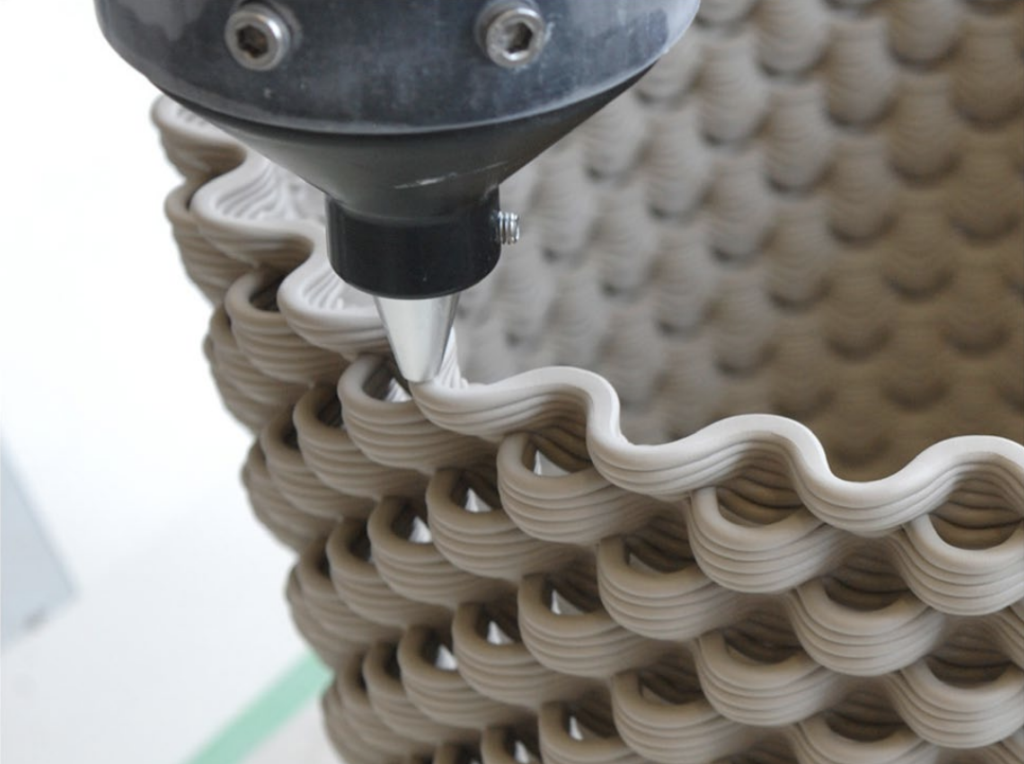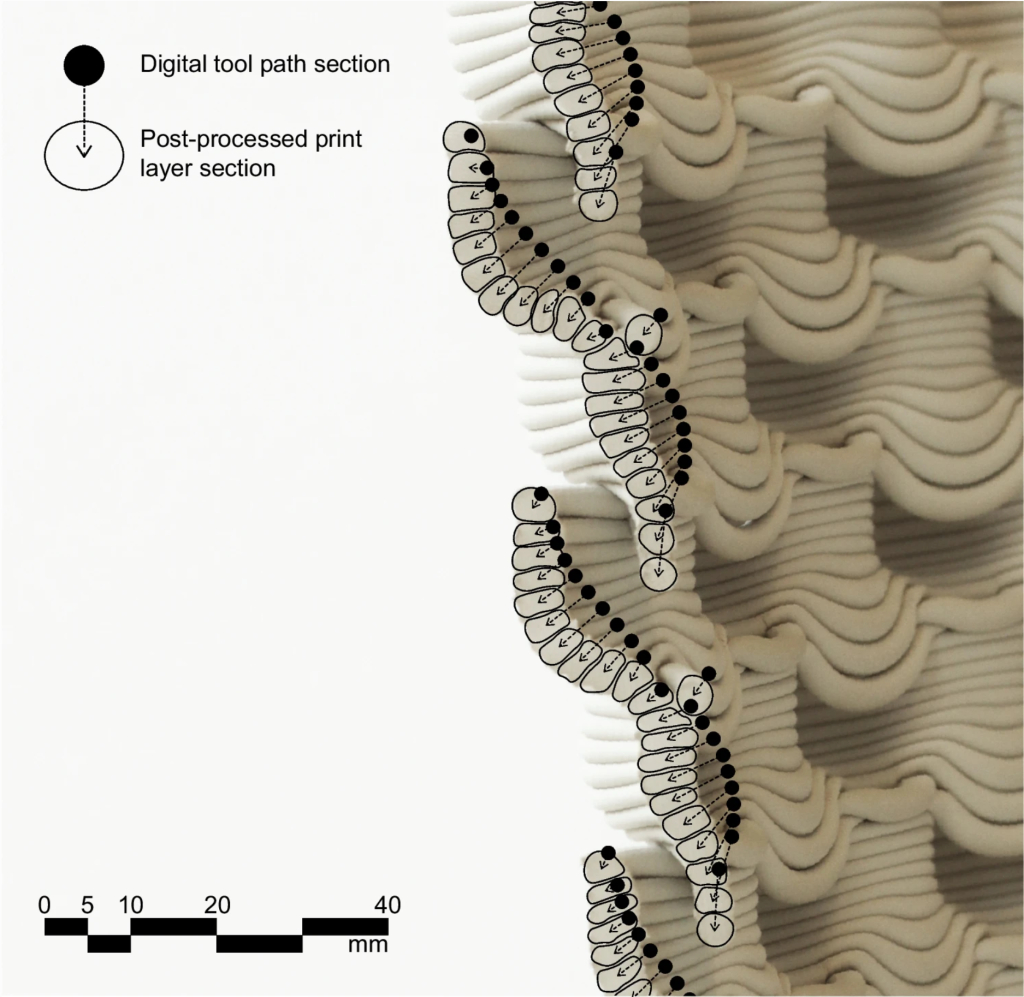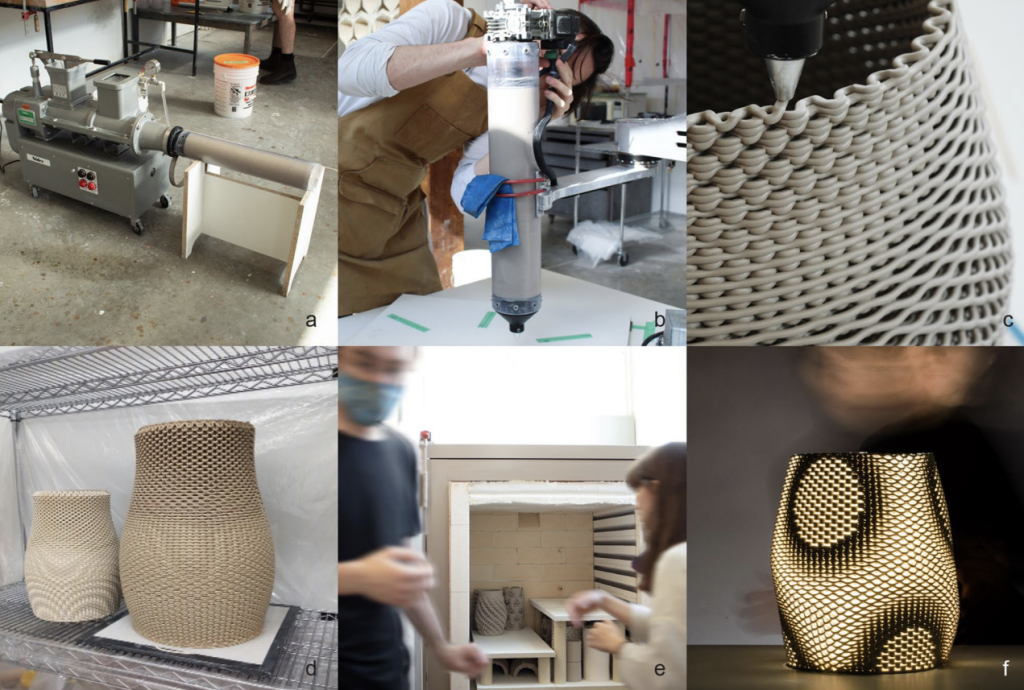Researchers at Canada’s University of Waterloo have come up with a novel way of 3D printing household goods from functionally-graded ceramics.
By precisely programming functionally-graded materials, it’s possible to give them properties that vary from one surface to another, in a way that allows them to address specific applications. Having created a graded clay-based composite, the Waterloo team has now developed a means of altering its deformation during wet-processing, and 3D printing it into screens that ‘grade’ lamps’ illumination.

Changing architectural norms
When it comes to the formulation of ceramics currently used in the architecture industry, the primary goal tends to be material uniformity. This is because consistency across individual ceramic units makes production processes more predictable and cost-effective, and it also facilitates their integration into larger aggregates like bricks or tiles.
Another core element of conventional clay manufacturing lies in the regulation of material performance attributes, an approach designed to minimize deformation. Many formative methods for the processing of clay, even involve the use of molds or formwork to achieve this during wet-processing, but is it necessary? And what if the process was flipped?
Through the active utilization of plastic deformation in clay 3D printed parts, the University of Waterloo team propose that it’s possible to realize previously-unfeasible builds with ‘variable sectional conditions.’ This, the researchers say, could be useful when it comes to creating structures with a desired stability, sectional width, and porosity, including those that vary from being opaque to highly porous.

Creating functionally-graded shades
Once they’d formulated a functionally-graded material, the team set about developing a way of accurately 3D printing with it. Producing parts from clay can be more difficult than with polymers, as it’s heavier, more viscoelastic, and has lower interfacial bonding, features that can cause discrepancies between 3D models and their printed counterparts.
To get around this, the researchers decided to ditch slicing software altogether, and come up with their own toolpath design in Grasshopper that deliberately manipulated their material’s sagging characteristics, to allow for the creation of non-planar structures.
Having iterated upon their toolpath to reduce the number of digital variables when it came to geometry generation, print resolution, extrusion domain, and speed value, the team went on to deploy it in practice. This saw the Waterloo engineers Liquid Deposition Modelling (LDM) 3D print light screens with apertures that were functionally-graded, so they had varying porosities that altered illumination.
Created via the deposition of a series of unsupported overhangs, the apertures were tested with three different designs, featuring small, medium, and large gaps. While the smallest of these had apertures at a scale of a single layer, the larger builds were created using cycles of 11 and 17 layers, respectively, but each ultimately yielded a successful build.
Perhaps the most impressive aspect of the researchers’ experiment, was that the largest shade included two different patterns, which overlapped to create two distinct lighting shelves on its exterior. In future, the team say their approach could “be applied to a multitude of base geometries,” including the creation of light fixtures, decorative masonry components, and privacy screens, among others.

Though not commonly deployed in the 3D printing industry, there are those seeking to better utilize clay, particularly as a construction material. One of the early leaders in this space is WASP, a firm that continues to advance its clay-compatible technology, and revealed in 2021 that it was 3D printing motorcycle models for Honda.
In other more experimental applications, researchers at the Delft University of Technology have also previously developed a calcined clay-based 3D printing cement. Compared to traditional cement, the novel ceramic was said to offer improved flow consistency, hydration properties, and buildability, all crucial aspects of precision extrusion.
The researchers’ findings are detailed in their paper titled “Harnessing plastic deformation in porous 3D printed ceramic light screens,” which was co-authored by James Clarke‑Hicks, Isabel Ochoa, and David Correa.
To stay up to date with the latest 3D printing news, don’t forget to subscribe to the 3D Printing Industry newsletter or follow us on Twitter or liking our page on Facebook.
While you’re here, why not subscribe to our Youtube channel? featuring discussion, debriefs, video shorts and webinar replays.
Are you looking for a job in the additive manufacturing industry? Visit 3D Printing Jobs for a selection of roles in the industry.
Featured image shows one of the researchers’ lamp shades being 3D printed. Photo via James Clarke-Hicks, the University of Waterloo.



